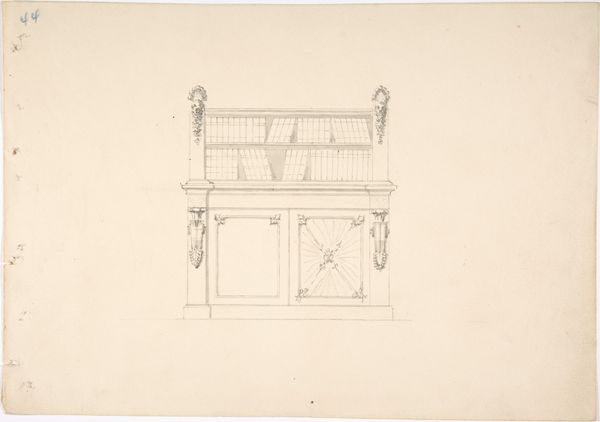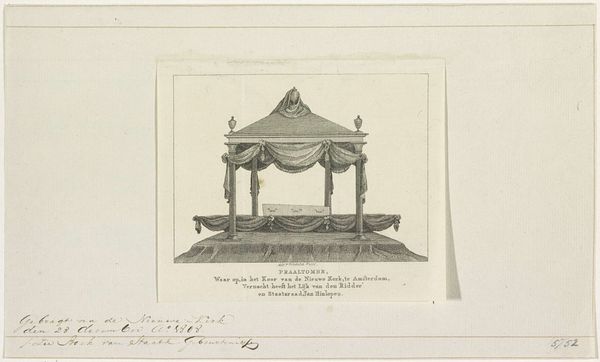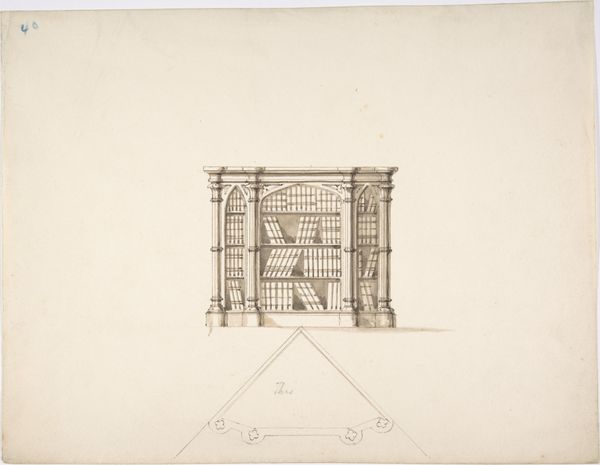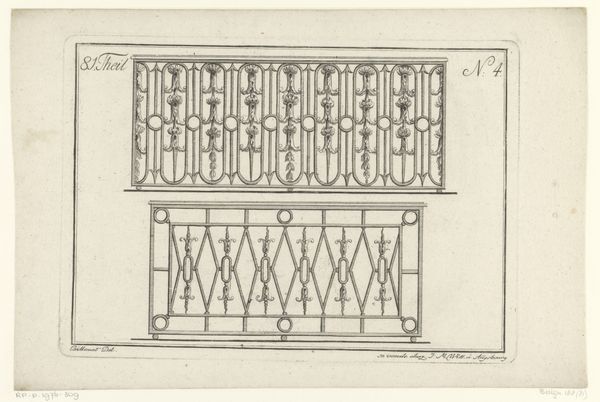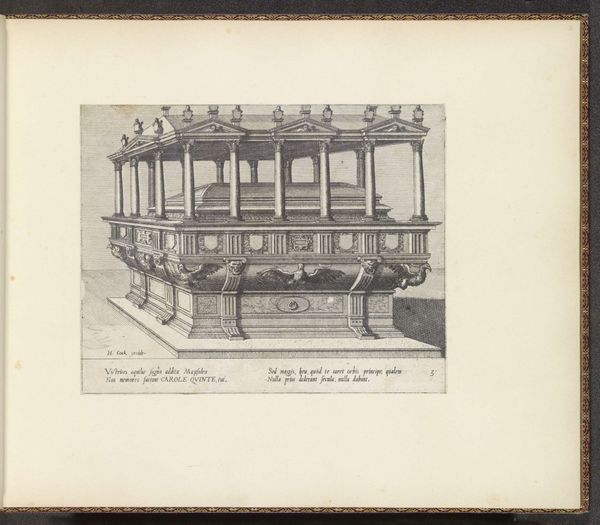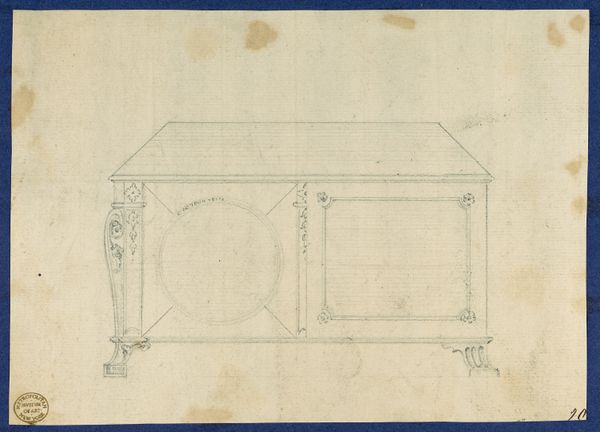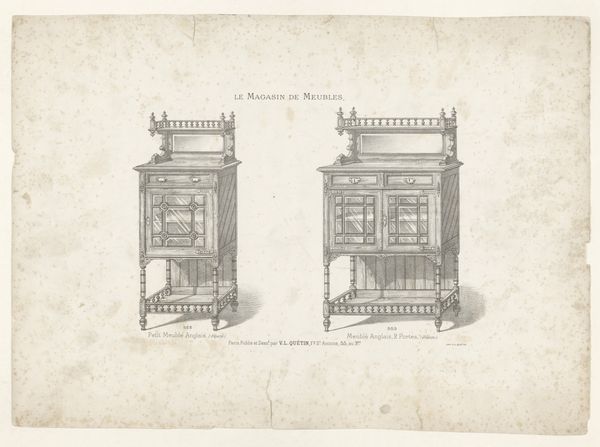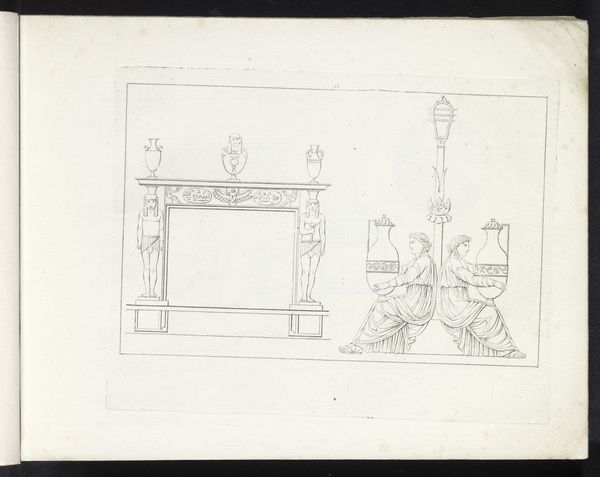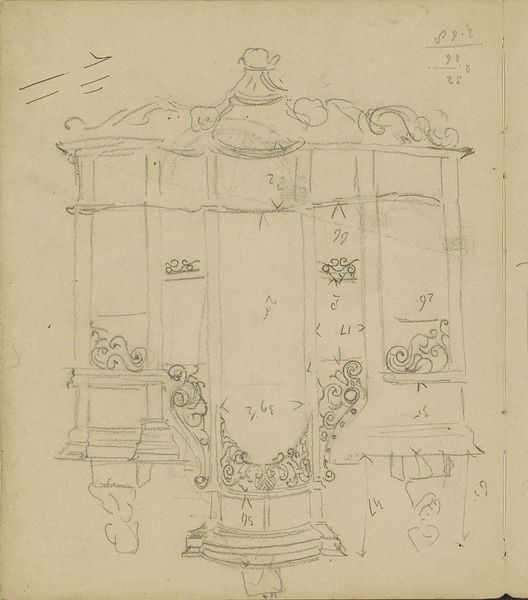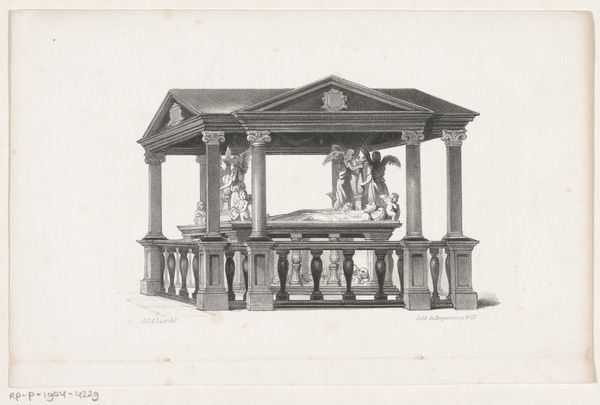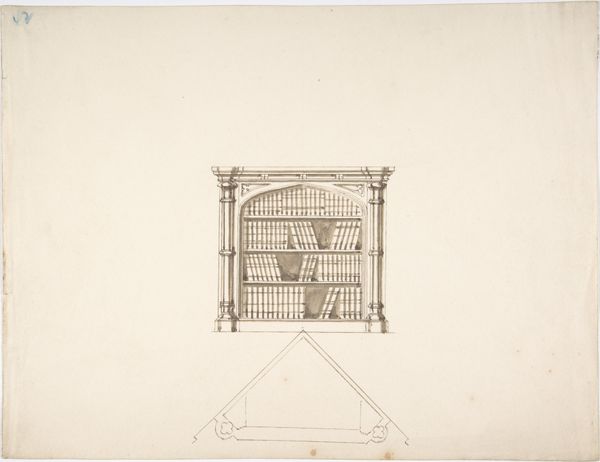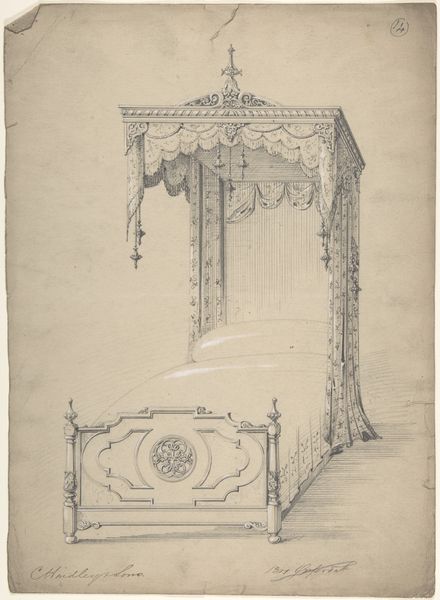
Dimensions: height 159 mm, width 231 mm
Copyright: Rijks Museum: Open Domain
Editor: This drawing, "Classisistisch huis," or "Classicist House," was made by Willem Wenckebach sometime between 1870 and 1926. It's currently held at the Rijksmuseum. It's a pencil drawing on paper, seemingly a study of architectural form. It looks so precise, like a technical blueprint almost, yet clearly hand-drawn. What aspects of the composition strike you? Curator: The purity of line, the clear delineation of form, and the adherence to geometric principles are what command my attention immediately. Consider how Wenckebach meticulously constructs the facade through a network of precise strokes. The use of perspective, though somewhat rudimentary, provides a clear sense of depth and volume. Editor: It feels very structured. Are you saying the appeal of the work lies in the interplay of these geometric forms, like the rectangles of the windows and the cylinders of the columns? Curator: Precisely. The aesthetic impact resides in the equilibrium achieved through these ordered elements. Observe the implied symmetry. Although this is merely a sketch, it invokes the principles of Neoclassicism, with an emphasis on order, rationality, and clarity. Do you find any tension in the apparent unfinished nature of the sketch versus the clear aim toward symmetry? Editor: I do see what you mean. There’s something inherently satisfying about how all these shapes and lines converge, even in its unfinished state. Curator: Exactly! The "Classisistisch huis" achieves a balanced aesthetic by demonstrating how these forms engage. Through this tension, Wenckebach transforms paper into a demonstration of design principles, transcending the image’s apparent utility. Editor: I see it so differently now. The beauty truly is in its formal construction. Thanks!
Comments
No comments
Be the first to comment and join the conversation on the ultimate creative platform.
